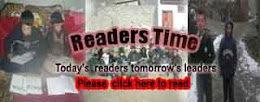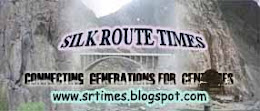VoH Monitor
 Minister for Petroleum and Natural Resources Seyed Naveed Qamar and a delegation from the National Iranian Oil Company (NIOC) held a meeting in Islamabad to discuss different aspects of the multi-billion-dollar pipeline project which is due to bring Iran's gas to Pakistan, Fars News Agency reported. The high-level Iranian delegation informed Pakistan that Iran has already constructed 900 km pipeline of 56 inch diameter from Assalouyeh gas processing facility up to Iranshahr.
Minister for Petroleum and Natural Resources Seyed Naveed Qamar and a delegation from the National Iranian Oil Company (NIOC) held a meeting in Islamabad to discuss different aspects of the multi-billion-dollar pipeline project which is due to bring Iran's gas to Pakistan, Fars News Agency reported. The high-level Iranian delegation informed Pakistan that Iran has already constructed 900 km pipeline of 56 inch diameter from Assalouyeh gas processing facility up to Iranshahr.Syed Naveed Qamar welcomed the Iranian delegation and expressed his satisfaction on the progress of the project for import of 750 million cubic feet per day of gas from the brotherly country of Iran. The next coordination Committee meeting is scheduled to be held in Tehran in February 2011, the statement said. In a major breakthrough on March 20, 2009, the Pakistani government approved Iran's proposed pricing formola for gas supplies to the South Asian nation. Subsequently, Tehran and Islamabad signed a final agreement to launch implementation of the project. Tehran and Islamabad also sealed a final contract for the start of Iran's gas exports to Pakistan through the multi-billion-dollar pipeline in spring 2014. The gas will be supplied from the South Pars field. The initial capacity of the pipeline will be 22 billion cubic meters of natural gas per anum, which is expected to be later raised to 55 billion cubic meters. It is expected to cost $7.4 billion.Cour.- Trend
Monitoring desk
 President Asif Ali Zardari on Thursday said the government strongly disapproved any incident of violation of its sovereignty.Any violation of internationally agreed principles was counter-productive and unacceptable, he remarked.The president expressed these views during a meeting with Director CIA Leon Panetta, who called on him here at the Aiwan-e-Sadr.Leon Panetta was accompanied with Ms. Anne W. Patterson, US Ambassador to Pakistan. Interior Minister Senator A. Rehman Malik, Foreign Secretary Salman Bashir and DG ISI Lt-Gen Ahmed Shuja Pasha also attended the meeting.
President Asif Ali Zardari on Thursday said the government strongly disapproved any incident of violation of its sovereignty.Any violation of internationally agreed principles was counter-productive and unacceptable, he remarked.The president expressed these views during a meeting with Director CIA Leon Panetta, who called on him here at the Aiwan-e-Sadr.Leon Panetta was accompanied with Ms. Anne W. Patterson, US Ambassador to Pakistan. Interior Minister Senator A. Rehman Malik, Foreign Secretary Salman Bashir and DG ISI Lt-Gen Ahmed Shuja Pasha also attended the meeting.Matters relating to cooperation in the fight against militants and security situation in the region among other related issues were discussed in the meeting. President said that the fight against militancy and terrorism remains the highest priority and the government was determined to pursue its struggle against militancy till its logical end. He said that there was a need to enhance trust, cooperation and coordination at the strategic, policy and operational planes.
Capacity enhancement of the Pakistan security apparatus was very crucial, the President observed. The President said Dr. Aafia's sentence was being perceived as harsh and disproportionate and has led to protests in Pakistan. Leon Panetta thanked the President for meeting and reiterated his government's commitment to help people of Pakistan in all possible manners. Asif urges relief bodies to augment efforts: President Asif Ali Zardari on Thursday urged Pakistan Red Crescent Society (PRCS), NGOs and other humanitarian organisations to augment efforts for relief and rehabilitation of the flood affected people. In a meeting with President of International Federation of Red Crescent (IFRC) Tadateru Konoe here at the Aiwan-e-Sadr, the President asked the relief organisations to complement government's efforts in reaching out to the flood victims in remote areas of the country.
President appreciated IFRC for the humanitarian services to the most vulnerable sections of the society in critical times of natural disasters, including the recent devastating floods. The President said the country had never seen such a large scale devastation caused by the floods that affected over 70 districts of the country. He said besides initial relief to the flood affected, there was a need to take measures against the spread of diseases and rebuild destroyed homes, roads, bridges and infrastructure.He said it was a huge challenge for any government or party to undertake on its own and can only be managed with combined and concerted efforts of the whole nation, non-governmental organizations (NGOs), the civil society, the international community and donor agencies. IFRC President Tadateru Konoe apprised President Zardari that PRCS and movement partners have so far reached out to over 1,43,000 families by providing food packs and non-food items and added that the IFRC planned to provide assistance to 300,000 affected families during emergency relief phase.
Monitoring Report
 Three Pakistani soldiers have reportedly been killed in an air strike by NATO helicopters during a cross-border attack, Pakistani officials have said. According to a Pakistani security official, the soldiers were killed in an “unprovoked attack” on a Pakistani checkpoint, the BBC reported.
Three Pakistani soldiers have reportedly been killed in an air strike by NATO helicopters during a cross-border attack, Pakistani officials have said. According to a Pakistani security official, the soldiers were killed in an “unprovoked attack” on a Pakistani checkpoint, the BBC reported.The NATO helicopters crossed up to 5km (three miles) into Pakistan, he added. This strike was the third NATO raid across the Afghanistan border into Pakistan over the past week. Earlier this week, following aerial engagement in Pakistani territory by the International Security Assistance Force (ISAF), Pakistan Interior Minister Rehman Malik had called it a violation of Pakistan’s sovereignty, and assured the Senate that the Afghan ambassador would be summoned to explain his position over the cross-border air raids by the ISAF. According to military sources, ISAF, which had earlier defended their air raids as an action ‘under the right of self-defence’, later informed the Pakistani commanders that they were trying to establish whether their helicopters during the operation had entered Pakistani territory.
‘Home-Page’ - Telling the story of the unknown and overlooked side
VoH News Monitor
 r 28: Marium Agha and Seher Naveed from Pakistan, Manali Shroff from India, Ivy Hon Mei Chan from China and Jo Ying Peng from Taiwan are the five artists whose works transform into a visual language, and a series of attractive representations come about through a conversation about home.
r 28: Marium Agha and Seher Naveed from Pakistan, Manali Shroff from India, Ivy Hon Mei Chan from China and Jo Ying Peng from Taiwan are the five artists whose works transform into a visual language, and a series of attractive representations come about through a conversation about home.‘Home-Page’ writes to eliminate race, political affiliations and borders; it writes to alert the public about abuses occurring beyond the news headlines. It tells the story of the other side - a side often unknown, ignored, overlooked or disregarded. This exhibition aims to show what goes beyond the media culture and the subjects that make the world and its people alike. Agha and Naveed received their Bachelor of Arts degree from the Indus Valley School of Art and Architecture, while Shroff, Chan and Peng received theirs from the Maharaja Sayajirao University of Baroda, the Chinese University of Hong Kong and the Tamkang University in Taipei respectively. All the artists received their Master of Arts degree from the Central Saint Martins College of Art & Design of London. Agha’s works explore the process of seeing an object, doing which one develops a relationship with the object based on one’s interpretation. She challenges predefined interpretations through her works by allowing the viewers to have a relationship with an object without tainting their experience of seeing it in any other context or framework. Her work style is derived from her home and society, the failed democratic government, the Muslims’ apathy and the conflicts within oneself. Naveed’s work develops with her awareness of physically living in one urban space and virtually being part of another. She came to London with a keen interest in the cityscape and has since been working with subject matters that involve urban landscape and social politics for reasons she is still not fully aware of. Perhaps it is this void that lies between visual imagery and reason that makes her increasingly curious of the workings of the urban landscape.
She is curious with the fascination of the everyday life, how media interprets, the constructions that interrupt our daily movement and her fascination with ‘living in a window punctuated world’. Shroff’s paintings are suffused with the surrealism of the everyday life and she often draws on visions and eccentric encounters in her mundane life that thrive in strange juxtapositions of humans and animals. The mysterious animals with their human eyes have very illusive but essentially benign presence. Though for all its strangeness and for all its dreamlike quality of its representation, in her paintings is a world rooted in reality. Her paintings are a window into her unexplained world that is at once recognisable, yet bizarre. The unrealistic nature of this relationship creates an enticing predicament, leaving the viewers to question the situation, and it would not be wrong to call her paintings ‘urban folktales’. Chan’s works deal with the transformation and reconfiguration of quotidian objects. By showing familiar things in unfamiliar ways, not only the characteristics of materials but the cultural and symbolic meanings are also challenged and transformed.
Thus, viewers are brought into an unprecedented realm to experience these everyday objects again. Peng is practicing primarily in video and photography and she has worked extensively with the theme found in ‘The Screen Project’ that explores the relation between the real and the representation. She has been the concept of few recent exhibitions, and her works multiply the different layers of symbolic boundaries. ‘Home-Page’ includes Agha’s ‘72 Virgins for my suicide lover’; Naveed’s ‘Time pieces’; Shroff’s ‘I go east, you go west, let’s lead the rest’, ‘Hark, hark the dogs do bite... utopian fantasies of Dominique clerk’ and ‘And the world calls us Colonial Cousins’; Chan’s ‘Tiny Oceans’; and Peng’s ‘Between Arrival & Departure’. This exhibition would continue until Thursday. photos courtesy artchowk gallery, Daily Times reports.
MQM slams US for Dr Aafia Siddiqui’s sentence

Security arrangements
A few hours before the rally, men in yellow caps guarded the entry and exit points of the venue, while a heavy contingent of police and other law enforcing agencies were also deployed. MQM’s security personnel searched each and every participant of the rally at the entrance. The police was seen on the roofs of buildings around MA Jinnah road while the paramilitary Rangers took their resistant positions after the rally ended.
Rallies across Sindh
Several rallies were organised in various parts of the province to protest against Dr Siddiqui’s sentence. Activists of the Pakistan Muslim League-Nawaz and the Muslim Students Federation held a demonstration outside the Hyderabad Press Club to condemn the sentence. Protesters shouted slogans against the verdict and claimed that the government has not taken the issue seriously. Meanwhile, in Sukkur, a rally was led by Qutubud Din, the MQM Sukkur Zone incharge, during which protesters marched from Jinnah Chowk to the press club. Activists of the Sunni Tehreek and the Jeay Sindh Qaumi Mahaz also participated in the rally. Expres Tribune Pakisan
VoH MONITOR
 The area surrounding the US Consulate was turned into a battlefield on Friday when a large number of workers of Islami Jamiat Talaba and other organisations tried to march towards it during a protest against the sentencing of Dr Aafia Siddiqui by a US court.The doctor was given 86 years imprisonment on Thursday for allegedly snatching a weapon from US men in Afghanistan and attacking them.Following the incident, a massive traffic jam was witnessed in surrounding areas including Zaibun Nissa Street, MA Jinnah Road, Fawara Chowk and II Chandigar Road. Thousands of vehicles remained stranded for about two hours, while all commercial activities remained suspended.
The area surrounding the US Consulate was turned into a battlefield on Friday when a large number of workers of Islami Jamiat Talaba and other organisations tried to march towards it during a protest against the sentencing of Dr Aafia Siddiqui by a US court.The doctor was given 86 years imprisonment on Thursday for allegedly snatching a weapon from US men in Afghanistan and attacking them.Following the incident, a massive traffic jam was witnessed in surrounding areas including Zaibun Nissa Street, MA Jinnah Road, Fawara Chowk and II Chandigar Road. Thousands of vehicles remained stranded for about two hours, while all commercial activities remained suspended.Officials of law enforcement agencies baton charged the protesters and resorted to tear gas shelling. The Islami Jamiat Talba (IJT) workers, led by their Karachi Amir Samiullah Hussaini, organised a meeting near Jehangir Park, Saddar after Juma prayers. Later they took out a rally and started marching towards the Karachi Press club, said SSP Saddar Town Javaid Akbar Riaz, while talking to Daily Times.
He said when the rally participants started to march towards American consulate, the law enforcement agencies and elite force blocked the roads with barricades in order to avoid any untoward incident near the American consulate.Daily times








0 comments